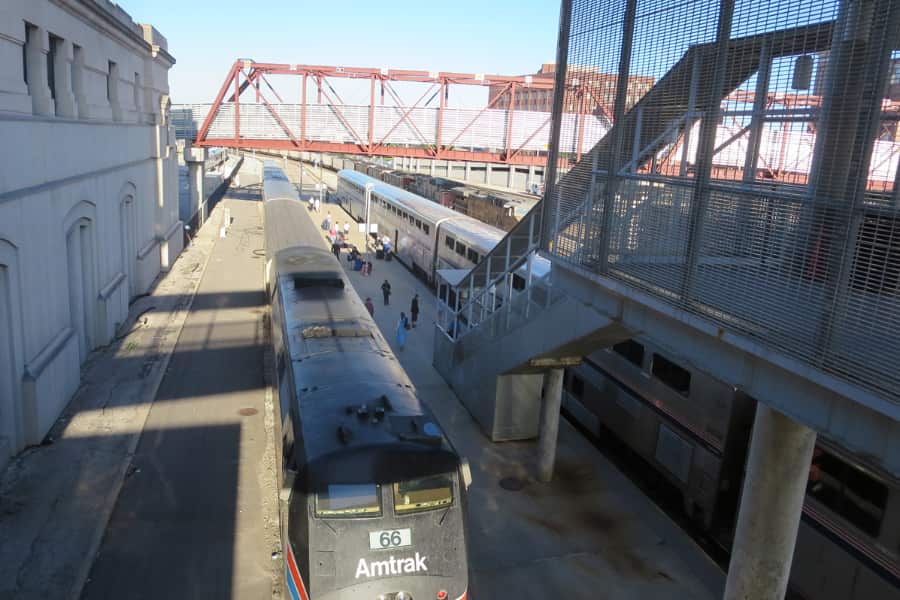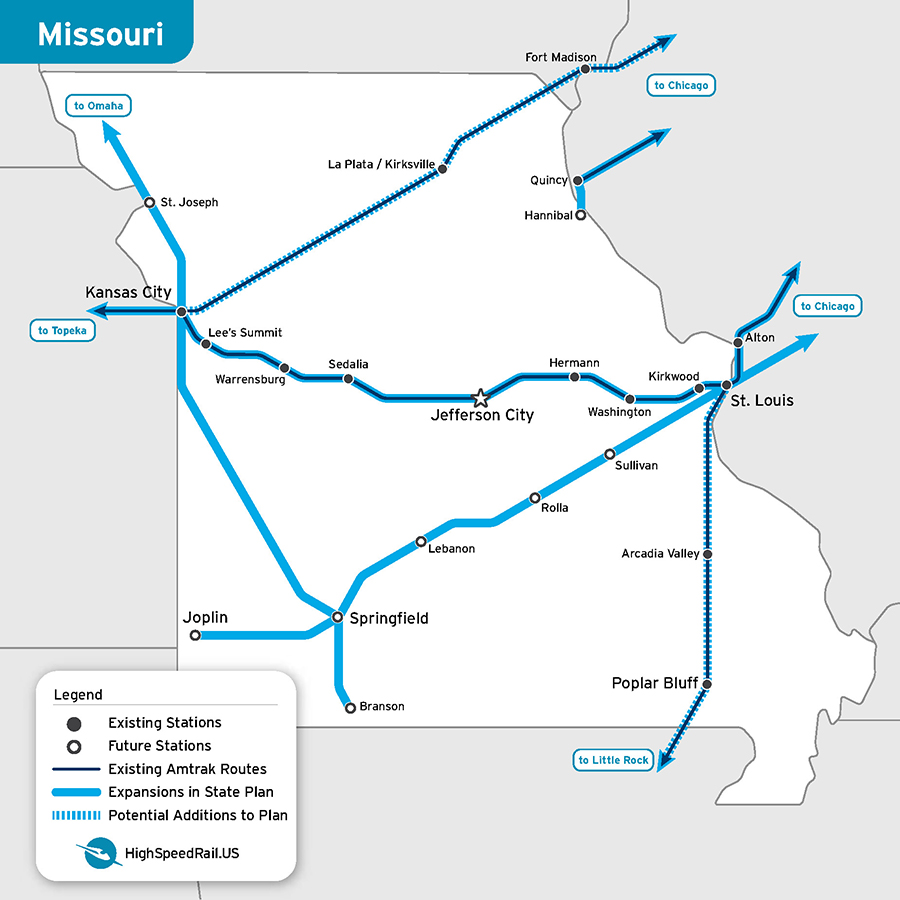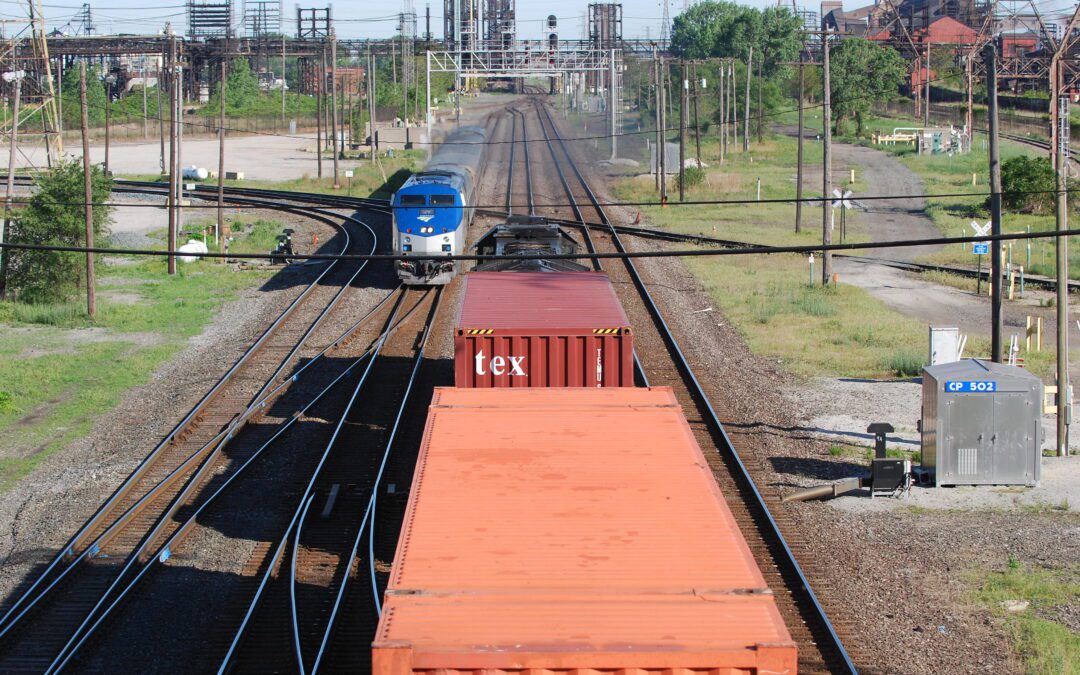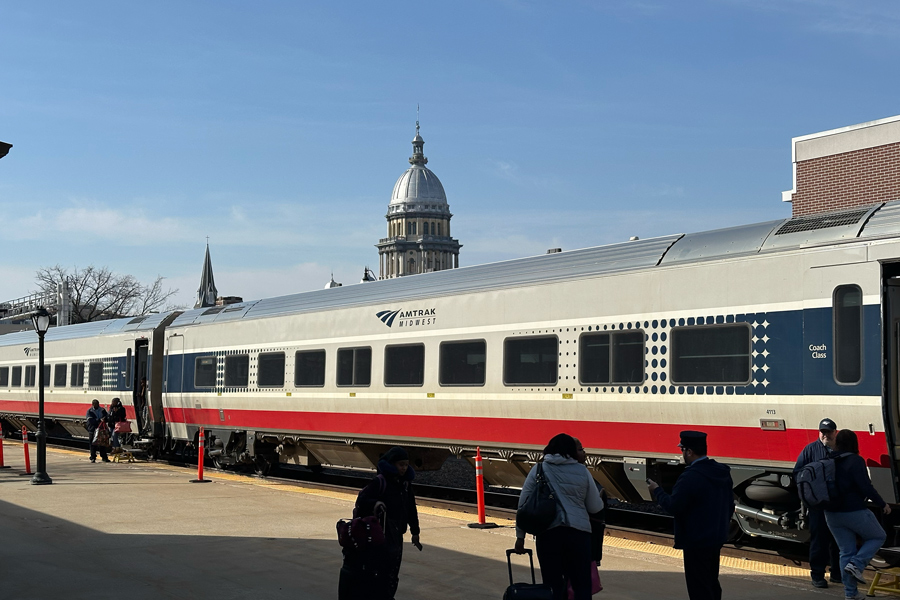Missouri
Existing Service
Missouri has a skeletal network of passenger trains on three routes:
1) The once-a-day in each direction Southwest Chief serves Kansas City and La Plata as it links Chicago and Los Angeles.
2) The Chicago – Dallas Texas Eagle stops at St. Louis, Arcadia Valley and Poplar Bluff once-a-day in each direction.
Missouri should work with Congress to add at least one or two daily roundtrips along these routes.
3) The Kansas City to St. Louis River Runner offers just two daily roundtrips. It’s time for Missouri to boost this to at least 10 per day.

Several daily roundtrips serve Kansas City at a platform tucked behind Kansas City Union Station. Photo: Rick Harnish

Missouri State Rail Plan
The Missouri State Rail plan suggests several routes that could be explored, but the Legislature has not funded further work.
The Kansas City – St. Louis River Runner Corridor
Missouri’s River Runner corridor seems like a great place to run fast and frequent trains.
The 283-mile line connects St. Louis and Kansas City, which have 5 million people. The state’s capital—Jefferson City—is situated right in the middle of the line. Both ends have well situated suburban stations.
The interstate linking KC with St. Louis, I-70, is so congested that Missouri wants to rebuild and widen it, at an estimated cost of $9 billion. The state’s business and political communities have expressed a desire for something better than driving. They supported a hyperloop route, which stalled out because the technology is impractical, at least so far.
The Need for Speed and Frequency
One takeaway is that Missouri needs high-speed trains.
Missouri’s future hinges on the St. Louis to KC corridor—home to the political capital and the majority of Missouri’s most valuable economic, cultural, and educational assets.
Cutting the trip from St. Louis to KC to under two hours would be game-changing for everyone in the region—workers, students, families, and tourists. Cross-state day trips would be routine, low-stress, and affordable.
But, today’s service is a fraction of what is needed, with just two daily round-trips, and a 5.5 hours travel time.
That means an easy day trip between St. Louis and Kansas City, by train, is impossible.
Not surprisingly, ridership is sparse. There were just 153,000 passengers on the River Runner in 2019.
High-Impact Improvements
Missouri would benefit immensely from upgrading and expanding service on its Amtrak River Runner route.
The line should offer 10 round-trips daily, with lightweight, tilting trains that take the route’s many curves faster. That would make day trips easy and convenient—which would divert a substantial share of car trips from I-70. And it would do so at a fraction of the cost of adding new interstate lanes.
Simultaneously, the state should begin work on a new high-speed line that will cut travel times further.
By investing in and improving a single route—running through the heart of the state—Missouri can boost its entire economy. That kind of low-cost, high-impact investment opportunity is rare. Missouri has total control over the upgrades. Undertaking a substantial project usually requires regional or at least cross-state cooperation—which often delays progress. But Missouri can act alone—and make the River Runner an engine of the state’s revitalization. Getting started as soon as possible should be a top priority.

Get Involved
Tell the United States Congress: It’s time to reconnect the country with high-speed and regional rail!
The Latest from HSRA
Our Latest Blog Posts
Check out the latest news, updates, and high speed rail insights from our blog!



